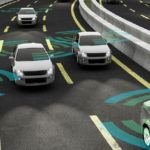A self-driving General Motors Co. Bolt slowly drove more than two miles through crowded San Francisco streets in its media debut on Tuesday, but double-parked cars and orange traffic cones tripped up the computer driver, and a taco truck stumped the machine.
GM’s self-driving unit, Cruise Automation, gave reporters rides on Tuesday, the first public roadtrips for non-employees in its cars which have been tested in San Francisco, Phoenix and Detroit.
Major automakers as well as technology leaders like Alphabet Inc and Intel Corp have poured billions into autonomous vehicle research, although fully self-driving cars are a work in progress. Robo-taxi service is seen as the main use for most self-driving vehicles, including the Bolt.
“Our mission is to bring this technology to commercial deployment at scale, with safety, as soon as we humanly can do that,” GM President Dan Ammann told reporters. He repeated Chief Executive Mary Barra’s promise in October that GM would roll out self-driving cars within “quarters, not years.”
 During a roughly 15-minute ride in a busy area of San Francisco over a 2.2 mile trip, the Cruise-enhanced electric Bolt carrying a Reuters journalist encountered 117 people, 4 bikes and 129 cars, according to the car’s sensors.
During a roughly 15-minute ride in a busy area of San Francisco over a 2.2 mile trip, the Cruise-enhanced electric Bolt carrying a Reuters journalist encountered 117 people, 4 bikes and 129 cars, according to the car’s sensors.
The car, never moving more than 20 miles per hour, navigated urban traffic, a tram line, construction zones, pedestrians crossing streets and many double-parked vehicles. Urban environments are as much as 46 times more complex than suburban areas, Cruise CEO Kyle Vogt said.
The Bolt reacted more conservatively than a human driver, for example slowing to a near stop after sensing a bike approaching in the opposite lane.
“Looking for a clear path” screens facing the driver and passengers read several times during the trip, when the car stopped next to some traffic cones or behind double-parked vehicles. After pauses, it restarted and passed the obstacles by itself.
A taco truck was too much, though. The Bolt’s human backup driver disengaged the system and took the wheel after the car waited for more than a minute behind the truck where construction workers ordered lunch.
Vogt said those issues would improve over time and that the winner of the self-driving car race would be the one that first launches at “massive scale” rather than just being the first to market a model.
GM over the past several months has regained its status as the largest U.S. automaker by market capitalization over electric luxury car maker Tesla Inc.
Some of GM’s share surge has come from investors betting on its investments in self-driving and electric cars, although the company’s profits are driven entirely by demand for trucks and SUVs in North America, and its growing sales in China.
“GM is aiming to more fundamentally alter investor perception on their position,” wrote Barclays analyst Brian Johnson in a note to clients on Tuesday.
Alphabet’s self-driving unit Waymo often is seen as company to beat in the emerging sector. It announced in November that it would launch a self-driving robo-taxi service in suburban Phoenix, carrying its first passengers in the next few months.
Earlier this month, GM said it would launch a range of electric vehicles in 2021 in a direct challenge to market leader Tesla, which is struggling to ramp up its more affordable, high-volume Model 3.
(Reporting By Sage; Editing by Peter Henderson and Richard Chang)
Topics Auto
Was this article valuable?
Here are more articles you may enjoy.


 Good Times for US P/C Insurers May Not Last; Auto Challenges Ahead
Good Times for US P/C Insurers May Not Last; Auto Challenges Ahead  10 Highest Class-Action Settlements in 2025 Eclipsed $70B Total: Duane Morris
10 Highest Class-Action Settlements in 2025 Eclipsed $70B Total: Duane Morris  New York Governor Hochul Vows to Tackle Insurance Affordability, Litigation and Fraud
New York Governor Hochul Vows to Tackle Insurance Affordability, Litigation and Fraud  Consumer Acceptance of Telematics Widens, Says Survey
Consumer Acceptance of Telematics Widens, Says Survey 

